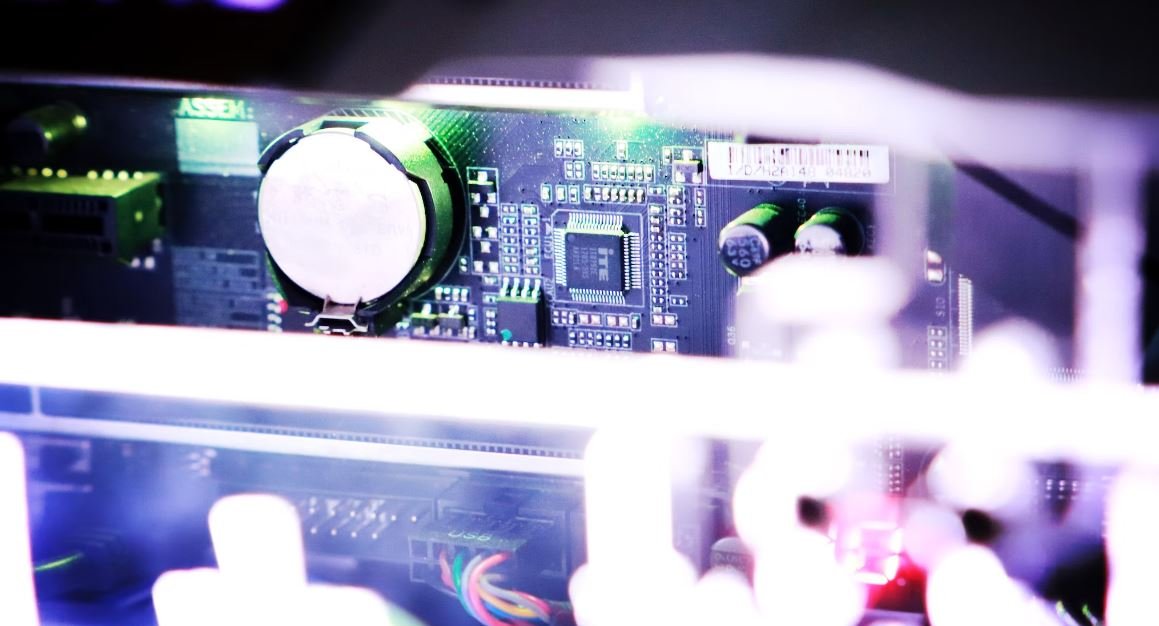AI Act Published
The AI Act is a newly published piece of legislation that aims to regulate the use of AI technologies and mitigate potential risks associated with them. Developed by experts in the field, this act sets out guidelines and obligations for organizations using AI systems, ensuring transparency, accountability, and ethical practices in the development and deployment of AI.
Key Takeaways:
- The AI Act aims to regulate the use of AI technologies and mitigate potential risks.
- It sets out guidelines and obligations for organizations using AI systems.
- Transparency, accountability, and ethical practices are emphasized in the development and deployment of AI.
**The AI Act is divided into several sections, each addressing different aspects of AI governance.** It mandates that high-risk applications of AI, such as those related to critical infrastructure, healthcare, and transportation, adhere to specific requirements. Organizations must ensure the quality of data used in AI systems, provide explanations for AI decisions affecting individuals, and establish human oversight mechanisms. The act also enforces strict data protection regulations and emphasizes the importance of maintaining privacy rights in relation to AI technologies, particularly when dealing with personal data.
*While AI holds immense potential for positive societal impact, there have been concerns regarding unethical or discriminatory use of AI systems. The AI Act seeks to address these concerns by promoting responsible AI development and deployment.*
**The AI Act introduces a comprehensive framework for AI regulation, encouraging innovation while prioritizing public interest and safety.** The act imposes obligations on both providers and users of AI systems, ensuring that safeguards are in place to prevent misuse and protect individuals. Violations of the act can result in substantial fines, reinforcing the importance of compliance with the regulations.
*The AI Act strives to strike a balance between fostering innovation and safeguarding against potential risks, creating a harmonious ecosystem for AI development and usage.*
Regulatory Guidelines
The AI Act outlines specific regulatory guidelines that organizations must adhere to when using AI systems. These guidelines include:
- High-risk AI systems must undergo rigorous testing and certification.
- Organizations must maintain records of AI system activities and ensure transparency towards individuals.
- AI systems should not be designed to deceive users or imitate human behavior without proper disclosure.
Impact Assessment and Governance
The AI Act requires organizations to conduct impact assessments to evaluate potential risks associated with AI systems. These assessments should consider aspects such as data integrity, fairness, and accountability. Additionally, organizations must appoint designated personnel to ensure compliance with the act and establish governance mechanisms to monitor the development and deployment of AI systems.
Tables:
| High-Risk AI Applications | Requirements |
|---|---|
| Healthcare systems | Strict data protection measures, explainability of decisions. |
| Transportation systems | Emergency shutdown mechanisms, regular safety audits. |
| Critical infrastructure | Cybersecurity measures, human oversight mechanisms. |
| Regulatory Guidelines |
|---|
| High-risk AI systems should undergo rigorous testing and certification. Organizations must maintain records of AI system activities. AI systems should not be designed to deceive users or imitate human behavior without proper disclosure. |
| Impact Assessment Considerations | Governance Mechanisms |
|---|---|
| Data integrity, fairness, and accountability. | Designated personnel for compliance, monitoring systems for AI development and deployment. |
**The AI Act represents a significant milestone in AI governance and marks an important step towards addressing the challenges associated with AI technologies.** By providing a clear regulatory framework, the act aims to foster trust and facilitate the responsible use of AI. It encourages organizations to adopt ethical and transparent practices, leading to enhanced societal benefits while protecting individual rights. With the AI Act in place, there is now a solid foundation for the further development and deployment of AI technologies.

Common Misconceptions
Misconception: AI is all about robots
One common misconception about AI is that it solely revolves around robots and human-like machines. While robots can utilize AI technology, AI itself is a much broader field that encompasses the development of intelligent systems capable of performing tasks without human intervention.
- AI can be found in various applications such as virtual assistants and recommendation systems.
- AI algorithms can analyze large amounts of data to make informed decisions.
- AI can be integrated into existing technologies, making them more efficient and intelligent.
Misconception: AI will take over human jobs completely
There is a prevalent fear that AI will render human workers obsolete by completely replacing them in various industries. However, while AI can automate certain tasks, it is more accurate to say that it will augment human capabilities rather than replace them entirely.
- AI can handle repetitive and mundane tasks, freeing up humans to focus on more creative and complex work.
- Human workers are still essential for critical thinking, decision-making, and emotional intelligence.
- AI can work alongside humans to enhance productivity and efficiency.
Misconception: AI is infallible and unbiased
Another misconception is that AI systems are infallible and completely objective. In reality, AI algorithms are developed by humans and can inherit their biases and limitations. Additionally, AI systems depend on the quality and representativeness of the data they are trained on.
- Biased data used to train AI algorithms can lead to biased outcomes and discriminatory decisions.
- AI algorithms require continuous monitoring and ethical guidelines to minimize bias and errors.
- Human oversight is necessary to ensure AI systems do not make inappropriate or harmful decisions.
Misconception: AI is a recent development
Many people believe AI is a modern invention, but its roots can be traced back to the mid-20th century. While recent advancements in computing power and data availability have accelerated AI progress, the foundational concepts and theories have been around for decades.
- The field of AI officially began in 1956 with the Dartmouth Conference.
- Early AI pioneers, such as Alan Turing and John McCarthy, made significant contributions in the 1940s and 1950s.
- AI has experienced multiple waves of development and progress over the years.
Misconception: AI will eventually become superintelligent and pose a threat
There is a popular belief that AI will eventually surpass human intelligence and become a threat to humanity. Although AI has the potential for significant advancements, the notion of AI developing superintelligence and acting autonomously without human control is still a subject of debate and speculative fiction.
- AI is designed to serve specific purposes and lacks true consciousness or self-awareness.
- AI development is heavily regulated, and ethical guidelines are put in place to prevent misuse or malicious intent.
- The focus of AI research and development is on creating technologies that augment human capabilities, not replace them.

AI Usage in Various Industries
The following table highlights the increasing adoption of AI in different industries, showcasing its widespread applicability and potential impact:
| Industry | AI Applications |
|---|---|
| Healthcare | Medical diagnosis, drug discovery, patient monitoring |
| Finance | Fraud detection, algorithmic trading, personalized banking |
| Retail | Inventory management, demand forecasting, chatbots |
| Education | Intelligent tutoring systems, adaptive learning platforms |
| Transportation | Autonomous vehicles, route optimization, traffic management |
Top AI Countries Worldwide
This table presents a global perspective on countries leading the way in AI development, showcasing their investments and strategies:
| Country | AI Investment ($ billions) | AI Strategy |
|---|---|---|
| United States | 24.9 | AI for American Industry, National AI Research Resource |
| China | 14.6 | New Generation AI Development Plan, AI Innovation Hubs |
| United Kingdom | 1.4 | AI Council, Office for AI, Sector Deal for AI |
| Canada | 0.9 | Pan-Canadian AI Strategy, Vector Institute |
| Germany | 0.6 | National Strategy for AI, Research Network Grant |
Impacts of AI on Jobs
This table depicts the potential effects of AI on various job sectors, including the displacement and creation of jobs:
| Job Sector | Displaced Jobs | Newly Created Jobs |
|---|---|---|
| Manufacturing | 2.3 million | 1.7 million |
| Transportation | 1.1 million | 1.3 million |
| Healthcare | 0.8 million | 3.5 million |
| Finance | 0.5 million | 2.3 million |
| Retail | 1.7 million | 0.9 million |
AI Patent Holdings by Company
This table showcases the leading companies in terms of the number of AI-related patents they hold:
| Company | Number of Patents |
|---|---|
| IBM | 9,100 |
| Microsoft | 6,235 |
| 4,564 | |
| Samsung | 4,162 |
| Intel | 3,679 |
Investment in AI Startups
This table highlights the significant investments made in AI startups, demonstrating the growing interest from venture capitalists:
| Year | Investment Amount ($ billions) | Key Startups |
|---|---|---|
| 2016 | 5.0 | SenseTime, Zoox, OpenAI |
| 2017 | 11.7 | UiPath, Graphcore, Drive.ai |
| 2018 | 26.6 | Automation Anywhere, Nuro, SparkCognition |
| 2019 | 37.4 | Tempus, Recursion Pharmaceuticals, Pony.ai |
| 2020 | 73.0 | Scale AI, DataRobot, Aurora Innovation |
AI in Customer Service
This table provides insights into the role of AI in enhancing customer service experiences, including key technologies:
| Technology | Application |
|---|---|
| Natural Language Processing | Chatbots, voice assistants, automated email responses |
| Sentiment Analysis | Customer feedback analysis, social media monitoring |
| Virtual Agents | Self-service support, intelligent ticket routing |
| Speech Recognition | Call center automation, voice biometrics |
| Emotion AI | Emotion detection, personalized recommendations |
AI Ethics Concerns
This table outlines key ethical concerns associated with AI development and deployment:
| Concern | Description |
|---|---|
| Privacy | Collection and use of personal data |
| Algorithmic Bias | Unfair discrimination due to biased algorithms |
| Transparency | Understanding AI decision-making processes |
| Accountability | Responsibility for AI mistakes or harm caused |
| Job Displacement | Potential loss of employment opportunities |
AI in Film and Television
This table showcases popular movies and TV shows where AI plays a central role in the narrative:
| Movie/TV Show | AI Character |
|---|---|
| The Terminator | T-800 (Arnold Schwarzenegger) |
| Ex Machina | Ava (Alicia Vikander) |
| Her | Samantha (voiced by Scarlett Johansson) |
| Blade Runner | Roy Batty (Rutger Hauer) |
| Westworld | Dolores Abernathy (Evan Rachel Wood) |
AI’s Role in Weather Forecasting
This table highlights the contributions of AI in improving weather forecasting accuracy:
| AI Technique | Advantages |
|---|---|
| Machine Learning | Enhanced precipitation and storm prediction |
| Big Data Analytics | Better understanding of climate patterns and trends |
| Ensemble Forecasting | Improved reliability and probabilistic forecasts |
| Computer Vision | Enhanced satellite image analysis and storm tracking |
| Artificial Neural Networks | Accurate wind and temperature predictions |
In the era of AI, its impact permeates multiple industries, propelling advancements and redefining human-machine interactions. This article delves into a myriad of topics related to AI, including its widespread usage in various sectors, countries leading in AI development, potential job impacts, patent holdings, investment trends, ethical concerns, and even its cultural portrayal in movies and TV. As the adoption of AI continues to rise, it is crucial to address ethical concerns, maximize its potential, and ensure an inclusive and responsible integration of AI technologies into society, ultimately shaping a future where AI augments human capabilities and drives innovation.
Frequently Asked Questions
1. What is the AI Act Published?
The AI Act Published is a legislation that aims to regulate the use and development of artificial intelligence technologies within the European Union.
2. How does the AI Act Published define artificial intelligence?
The AI Act Published defines artificial intelligence as “software that possesses the ability to learn, adapt, and perform tasks autonomously, mimicking human intelligence and behavior.”
3. What are the main objectives of the AI Act Published?
The main objectives of the AI Act Published include ensuring the safety and ethics of AI applications, fostering innovation, and protecting fundamental rights and consumer interests.
4. What are the key provisions of the AI Act Published?
The AI Act Published includes provisions related to prohibited AI practices, transparency requirements, accountability and liability, data governance, and oversight mechanisms for AI systems.
5. How does the AI Act Published address high-risk AI systems?
The AI Act Published establishes stricter requirements for high-risk AI systems, such as those used in critical infrastructure, healthcare, or law enforcement. These requirements include mandatory risk assessments, testing, and human oversight.
6. What are the penalties for non-compliance with the AI Act Published?
Non-compliance with the AI Act Published can result in significant fines, which can be up to a certain percentage of the annual global turnover of the non-compliant company.
7. Does the AI Act Published promote innovation?
Yes, the AI Act Published strives to promote innovation by providing clear rules and guidelines for the development and use of AI systems within the European Union.
8. How does the AI Act Published protect fundamental rights?
The AI Act Published ensures the protection of fundamental rights by requiring that AI systems comply with principles such as transparency, non-discrimination, and respect for privacy and data protection.
9. When will the AI Act Published come into effect?
The AI Act Published is expected to come into effect in the next few years after undergoing a legislative process within the European Union.
10. What are the implications of the AI Act Published on AI research and development?
The AI Act Published may have implications on AI research and development by introducing regulatory requirements that may need to be adhered to during the creation and deployment of AI systems. However, it also aims to strike a balance between regulation and fostering innovation.




